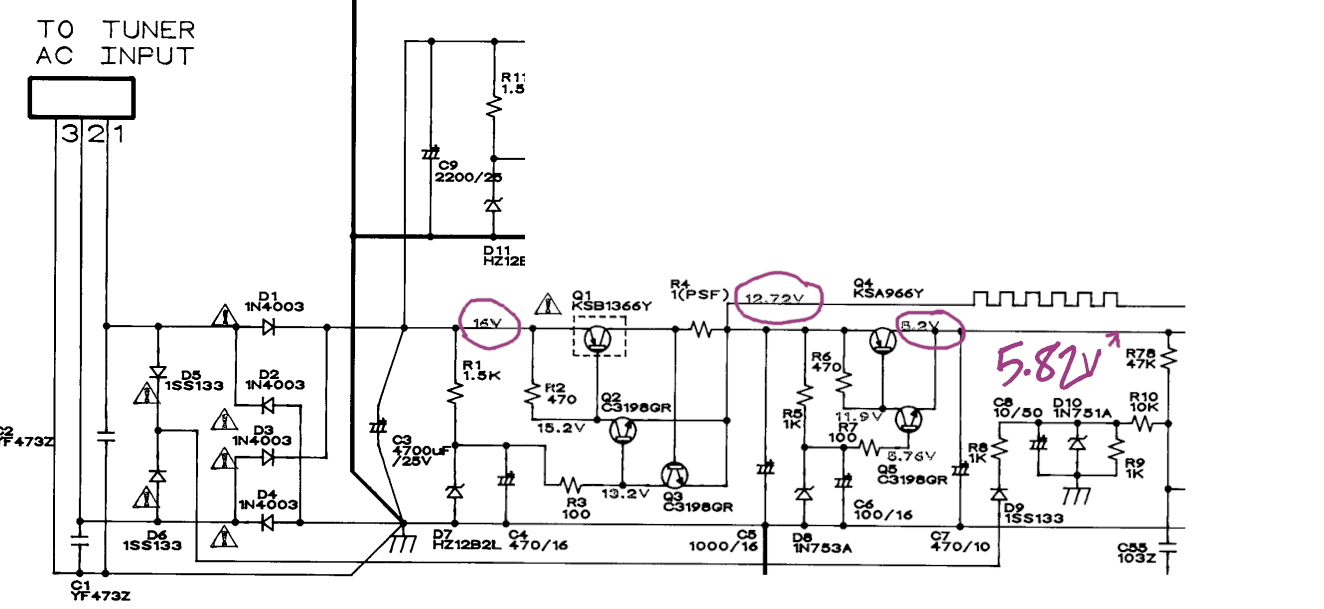Turnaround time is low because you can reload the plugin without restarting the Program; And debugging with e.g. python exceptions is very handy (no need to attach a c++-debugger).
Of course, this is only possible because of the Low Level Analyzer that was already done in C++.
Which was done very hacky, but... It's a hobby project! Pre-compiled plugin data can be downloaded In the github releases.

Next up is the micro-controller and the power supply.
As I saw (and measured) around 18V AC to the Tape Deck, but anything above 16V RMS will probably be enough. I will thus buy those cheap-o trafo-based supplies. At first I wanted to use a buck converter from the 5V USB supply, but 1. this may be not enough power (worst case 18v * 2A = 36w), and 2. I took a look into the schematics and I don't want to burn the fragile 1n4003 rectifier diodes (only 1A each) in the Deck:

Regarding the Micro-Controller: I had some STM32F4 Bluepills laying around, but especially with this custom protocol, sending and receiving, and translating this into USB commands without loosing data from the wire, I wanted something with multithreading. So I will probably use some of the RP2040 picos. I don't yet have them laying around, so in the meantime I will try using the bigger, non-pico brother. Let's see how I finally get my own PIO program done.
 PP
PP
Discussions
Become a Hackaday.io Member
Create an account to leave a comment. Already have an account? Log In.